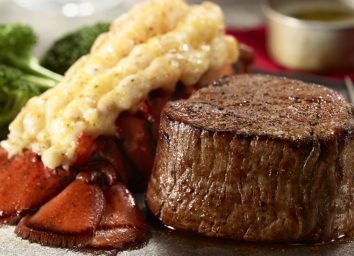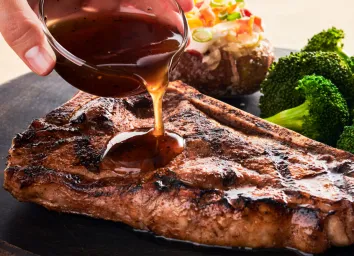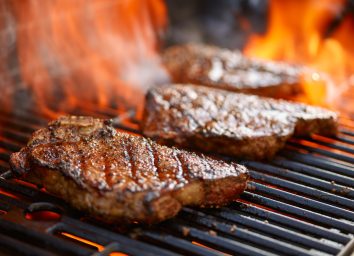8 Secrets You Never Knew About Brazilian Steakhouses
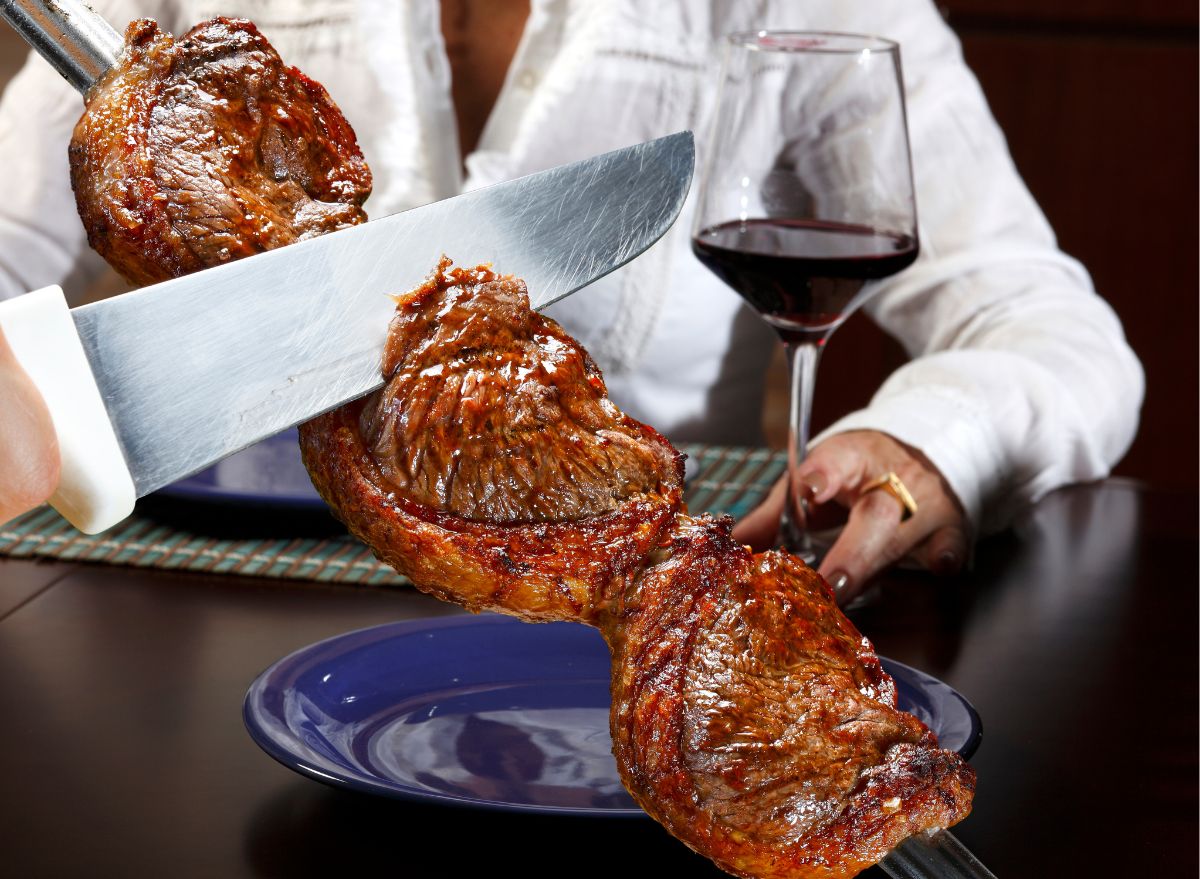
If you’ve ever stepped into a Brazilian steakhouse, then you know the decadent culinary experience that always follows—juicy meat on skewers sliced right onto your plate, numerous all-you-can-eat options, vinegary toppings, and sweet caramelized plantains. But have you ever thought about the history behind the Brazilian steakhouse, and why it differs quite a bit from a traditional American one?
While some may know it as a Brazilian steakhouse, the true name for it is a churrascaria. The name is translated from the Portuguese word for “barbecue” and is named after the way the meat is cooked. Churrasco style simply means the meat is grilled on an open flame. A common way of cooking meat churrasco style is on a skewer.
We took a deep dive into why this style of cooking became so popular in Brazil, how it traveled over to America, and why there’s always an endless amount of meat. Here are some of the secrets you never knew about Brazilian steakhouses, and for more dining tips, check out 8 Secrets Steakhouses Don’t Want You to Know.
Fogo de Chão is the leading Brazillian steakhouse chain in America.
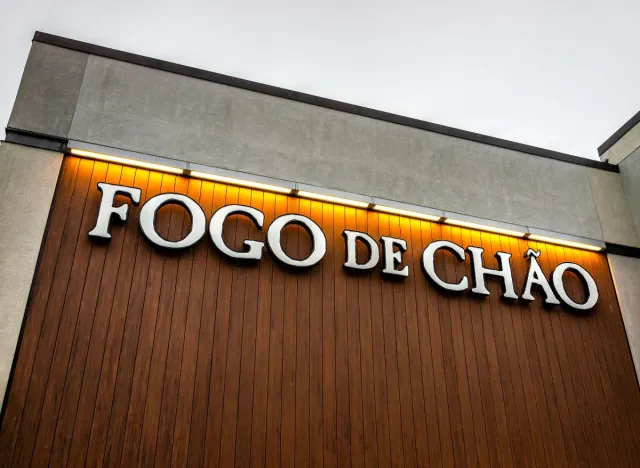
One of the most popular Brazilian steakhouse options in America is Fogo de Chão, a full-service Brazilian churrascaria that serves rodízio style right at your table. Founded by two brothers who grew up on a traditional Southern Brazilian farm in Serra Gaucha, they soon received formal churrasquerio training and opened their first location in Porto Alegre in 1979. Fogo soon came to America, opening its first restaurant in Dallas, Texas, and now operates over 60 dining locations across America as well as Brazil, Mexico, and the Middle East.
Brazilian barbecue dates back to the 1800s.
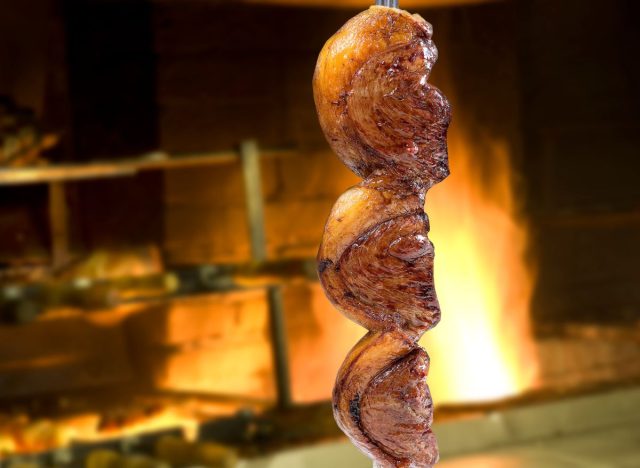
Churrasco-style of cooking dates back to the 1800s from the gauchos, rural nomadic horseback riders that wrangled cattle for their meat. They started roasting beef on skewers over an open flame, which made the flavor of their beef even more decadent. They would then bring home their skewers of beef to family and friends and serve the meet “rodízio,” sliced right from the skewer. This style of serving is still commonly used in Brazilian steakhouses around the world.
There are more than 20 different types of meats to choose from.
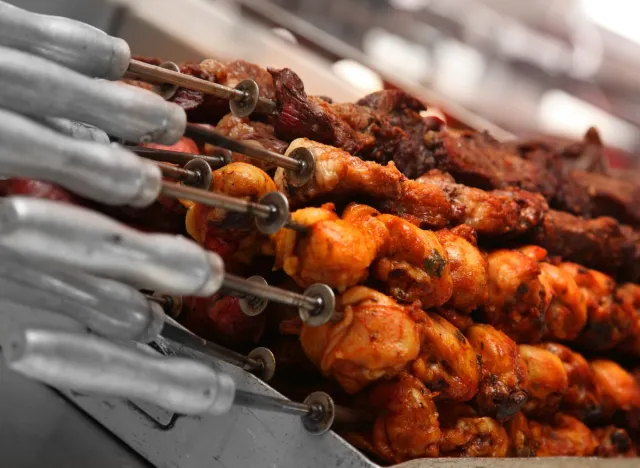
According to CNN, big churrascarias will offer up to 20 different kinds of meats for your meal to choose from. The most popular option includes picanha (a prime sirloin), followed by alcatra (top sirloin), baby beef, filet com alho (filet mignon with garlic), maminha (rump steak), and costela de Ripa (beef short ribs). Churrascarias will also offer non-beef options including pork loin, sausage, lamb, chicken, and fish.
Picanha is the most popular Brazilian meat to order.
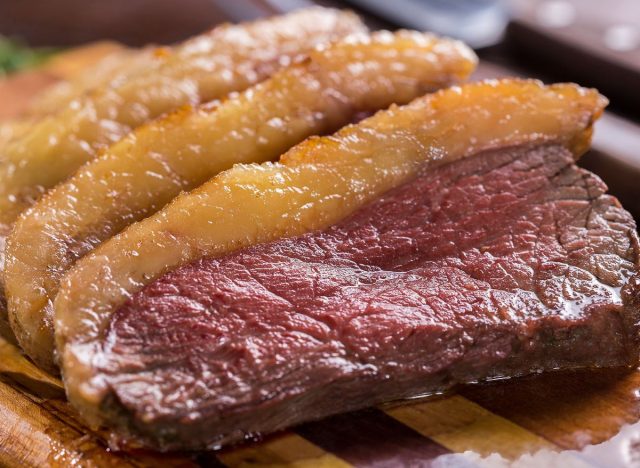
Brazilians favor the picanha, which is a cut of meat that comes from the top of the rump. It is typically sliced thin and served with rice and beans. Some Brazilian steakhouses will slice up picanha from a large skewer, which was grilled then slow-roasted rotisserie-style over charcoal. The top layer is then browned, then the meat is sliced and served fresh.
Lombo is a popular non-beef alternative.
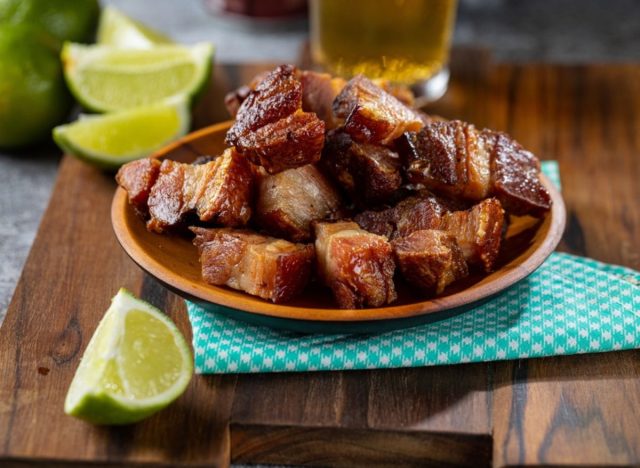
If you’re not a big steak person, lombo—pork loin—is the next most popular option. The loin is dressed in a parmesan cheese coating, and only the best cuts of loin are saved to grill and serve.
Most Brazilian steakhouses offer all-you-can-eat meat options.
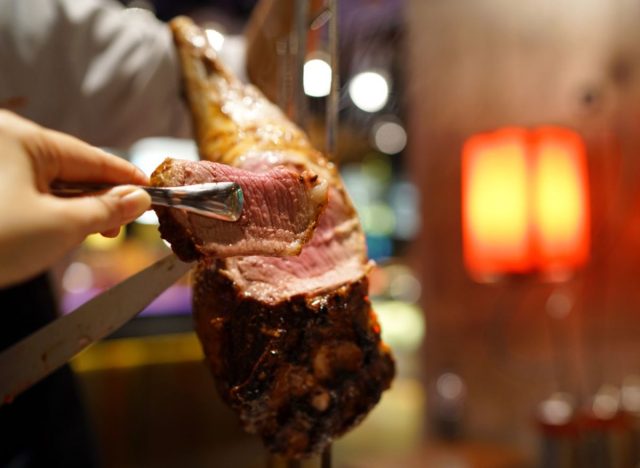
Because of its roots of being a family-style dining experience, Brazilian steakhouses are commonly known to be buffets—offering a variety of foods to choose from, including their long list of meats. The meats are sliced and served rodízio style, which means the sliced meats are served directly onto customer plates.
But, Brazillian steakhouses don’t have to be strictly bargain experiences
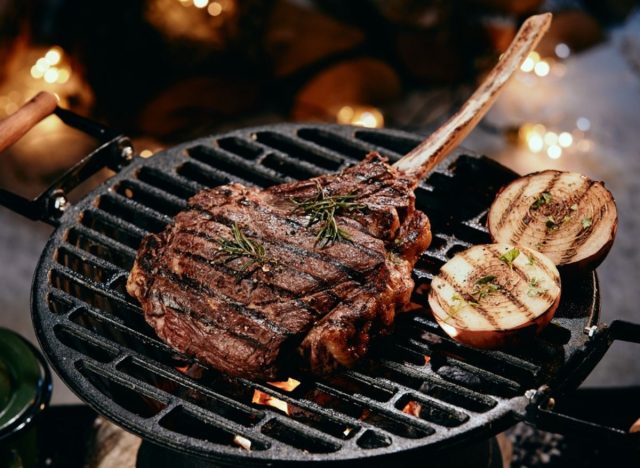
You can opt for the traditional experience, at a lower price, where plenty of meats including filet mignon, chicken, pork sausage, and even lamb will keep coming until you say stop. Or, for a price bump, at Fogo de Chao you can sample some of the more high-end cuts like the Wagyu N.Y. Strip or Ribeye which are both ages for a minimum of 21 days. The chain also offers a Dry-Aged Tomahawk Ancho steak that is aged for a minimum of 42 days.
Fatty meats are served with acidic sides to balance out the flavor.
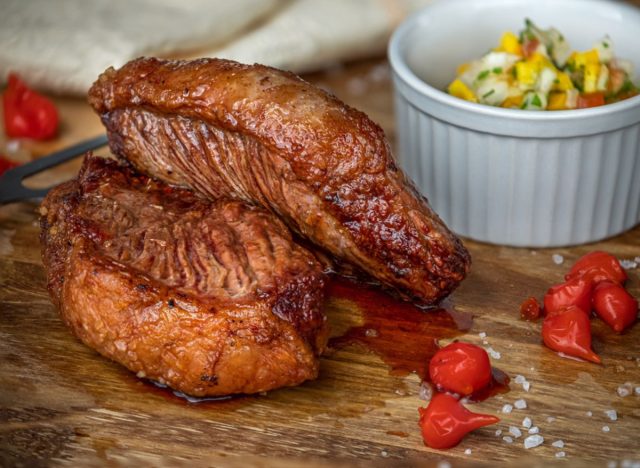
One of the most popular side is molho campanha, a Brazilian salsa typically made with tomatoes, red and green bell pepper, and onion, tossed in a vinaigrette. According to Insider, churrasco-style meats are typically fatty and pair well with acidic additions—including a caipirinha, a national cocktail served with cachaça (a native Brazilian alcohol), sugar, and lime.
A previous version of this article was originally published on Jul 19, 2022.

